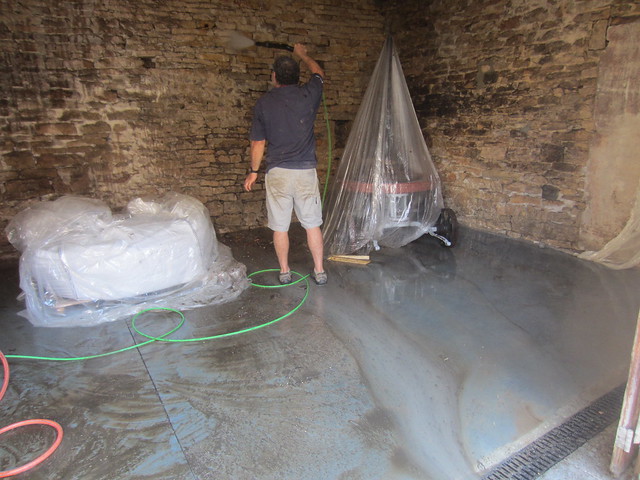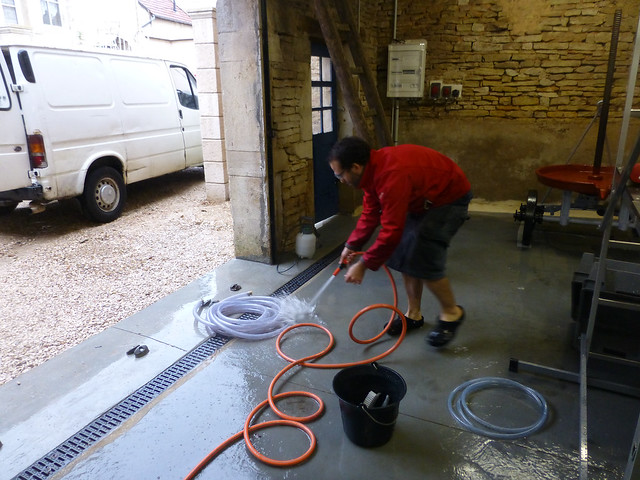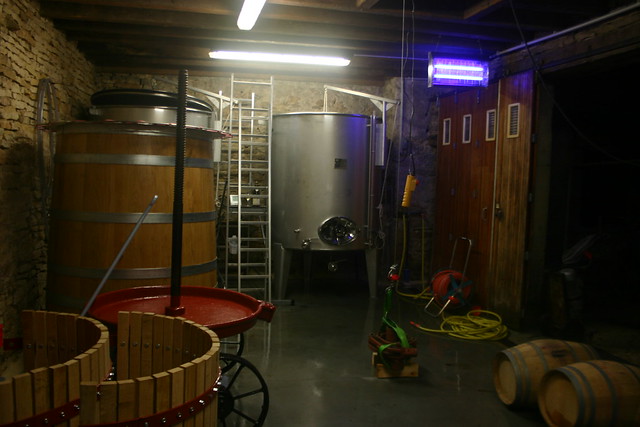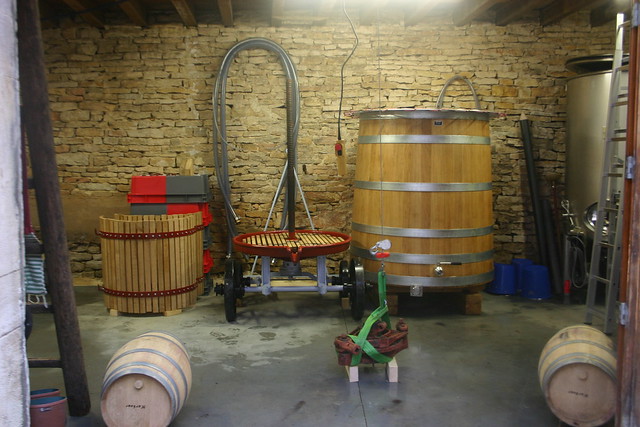Still have a grape source after the hail?
Covering the slab with clear polyethylene, or applying a curing compound, are the easiest and surest ways to retain moisture for proper curing:
You can also cover a slab with polyethylene sheets. Use clear poly, 4 mil or heavier. Do not use black poly, especially in hot weather. The idea is to keep the moisture contained in the concrete from evaporating. If the plastic has even small holes or tears, or if a tight seal is not maintained around the edge of the slab, moisture will escape and curing will stop. Tape the plastic to any protruding rebar or plumbing, lap and weight any seams, and weight all the edges. This method is practical and inexpensive, and works well when the poly is completely sealed.
There is one drawback: Where the plastic makes contact with the concrete, it can discolor the slab surface. If appearance is important, consider one of the other methods. Curing compound.You can apply a curing compound. These commercially available compounds provide a thin sealing film that accomplishes the same thing as a plastic sheet, holding moisture in the concrete. These compounds may be either clear or pigmented; with the pigmented product, you can tell where you’ve sprayed. They are relatively inexpensive - a gallon sells for about $8 and covers 200 to 300 hundred square feet. A garden sprayer works well for applying the compounds. Usually two coats are recommended, the second at right angles to the first, to ensure complete coverage. Keep in mind that all surfaces should be coated, including slab edges.
Although curing compounds will eventually wear off, some will prevent adhesion of paint, carpet, vinyl cements, or future concrete. Consult your supplier if this is a consideration. Curing compounds are widely used on both residential and commercial jobs, with good reason. They are easy to apply, inexpensive and effective, and they require little or no attention once applied. Best of all, you can use the slab as soon as it has cured enough that it won’t be easily damaged.
Source (with a good overall discussion of the concrete curing process): http://www.stanleytools.com/xhtml/p_concrete.htm
The month of August has been passing quickly. However, not much has happened in the renovation of the cuverie. Almost everyone in France heads south in the month of August to get their fill of sun and beaches. That apparently includes everyone at the electricity company… so we are left with our electrical still not connected to the grid.
With that said today we have got a few things done. We have finished the leveling of the ground, got a shipment of crushed gravel and placed the drain.

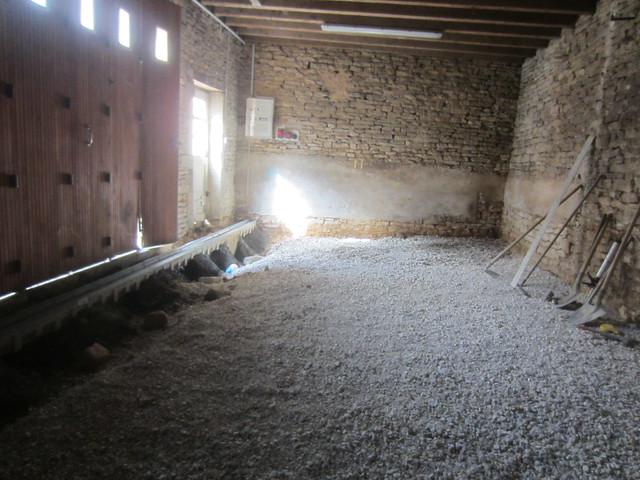
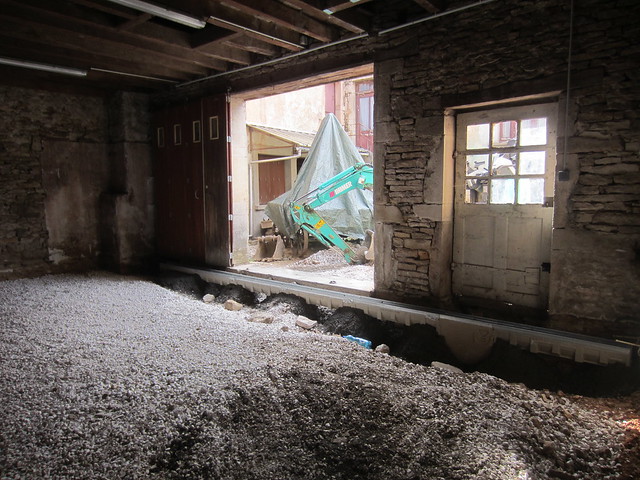
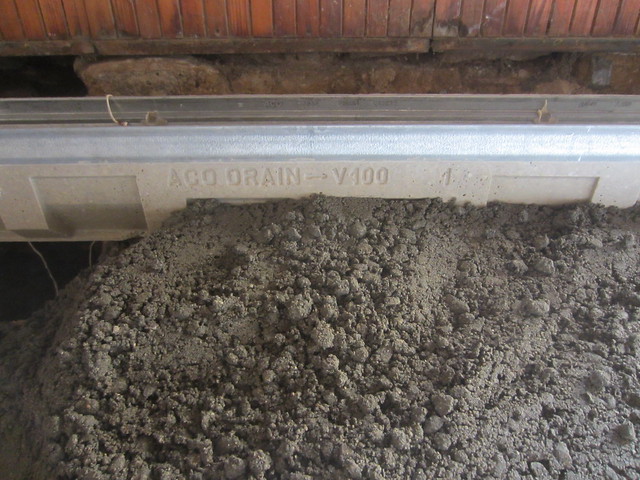
We are going to pour the concrete soon. Luckily, it has cooled off a bit here in Burgundy, so I dont think we will have a problem with the concrete drying too fast. I will post again shortly with and update on how that goes.
We made good progress with the floor over the last week. Laid a double layer of rebar, set a polystyrene border for expansion against the stone walls, framed the entrances and the rock drain and poured the concrete. I will let the pictures tell the story.
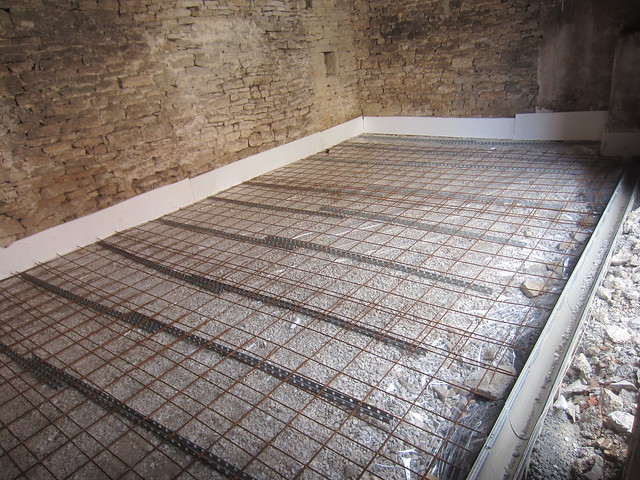


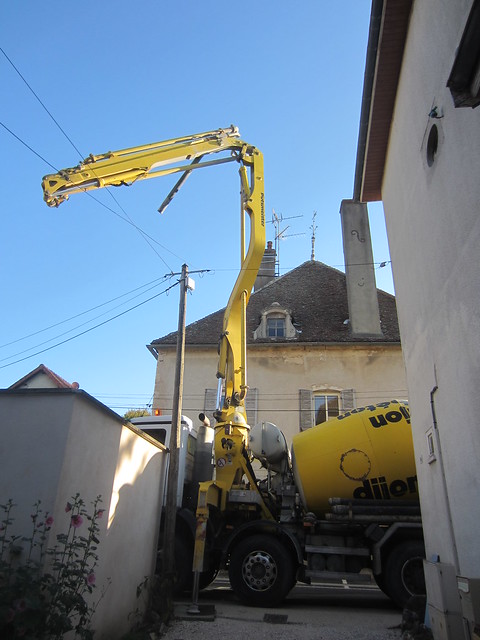
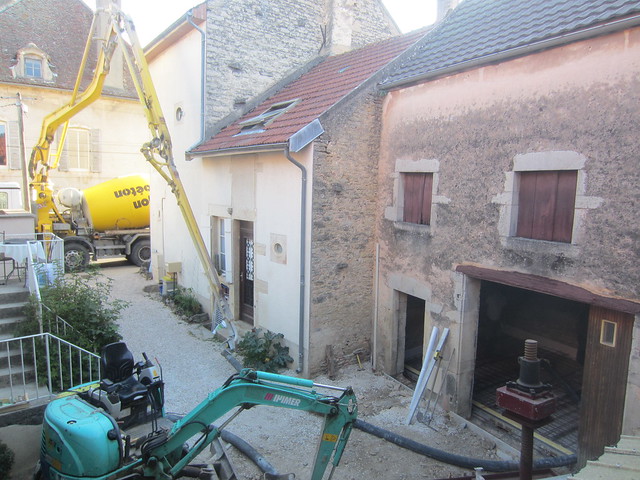


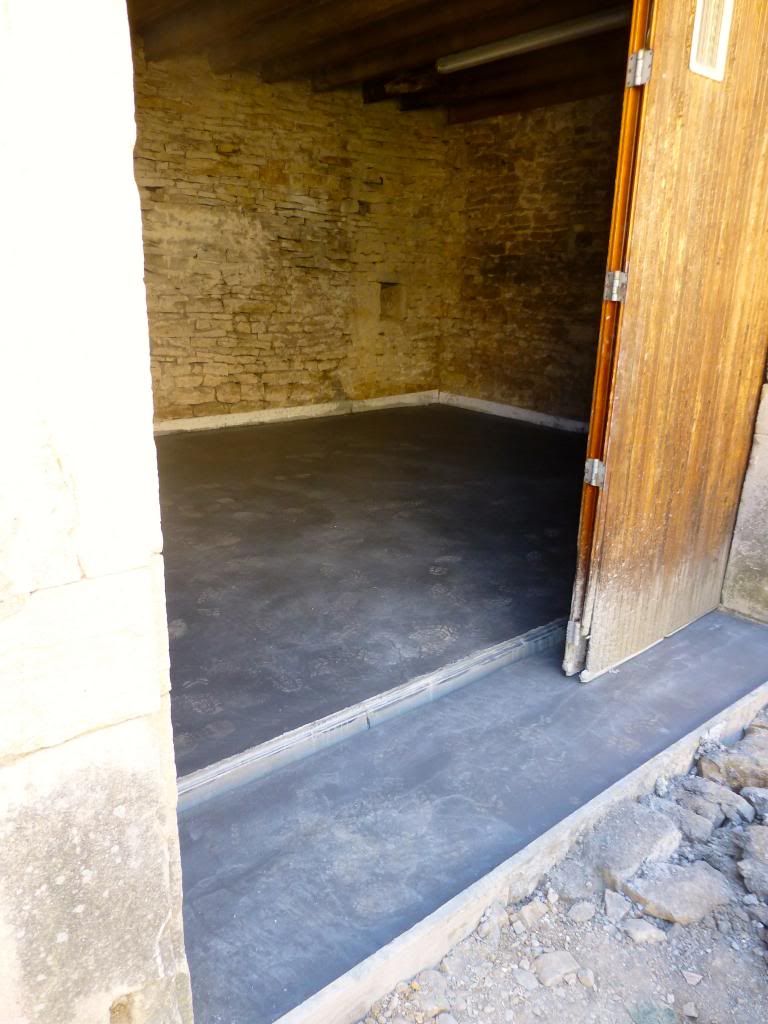
We are letting it sit for 10 days. Then we will finish and seal the floor. In the mean time we are starting a new Project… Renovating old burgundian winery - Vertical Press!
Are you going to have climate control in there since it is at the ground floor?
Nicholas, great to read about your winery progress! I look forward to reading about how you are going about getting grape sources with harvest fast approaching (I can only imagine what a “game” that could be). Best to you guys! ![]()
The work has been mainly concentrated in the old, now looking new, cuverie. That is where we will receive the grapes and our fermentations will take place. This part of the winery is in a north facing building so it is generally cool. Now with a harvest starting possibly the first week of October I am slightly concerned it might be too cool. So we are thinking about ways to insulate.
We have three main points of heat loss, the big and small doors, the ceiling and the walls. Colleen and I want to keep the stone walls visible. We like and want to save as much of the historical elements of the winery. So that leaves us with the doors and the ceiling. The plan now is to wait and see how the weather will be in the first half of October to see if we need to attack this issue.
Opposite the cuverie we have three cellars, two barrel rooms and one vaulted cellar. These will be used for the élevage (barrel aging). We have has a usb temp/humidity tracker in and out of these and have a fairly consistent temperature in the barrel rooms of around 16 degrees with 95% humidity. We can really easily raise the temperature by leaving the door and vents open. In the vaulted cellar, we have a super consistent temperature of 13 degrees with 95% humidity.
Hey Jim, you are right it is quite a game. With the vintages just passed in Burgundy, 2010, 11, 12 and now the issues of 2013 (long cold and rainy spring, a couple big storms - notably the hail that smashed through the Cote de Beaune) everyone is sitting and waiting. Even people who historically have had agreements in place and waiting to see what will happen. So it is a challange but we remain positive and optimistic. I think that Colleen will be posting soon on our website some details of our search for grapes.
For now I concentrate on the renovations, equipping the winery and preping for harvest.
The floor turned out great. The slope (1.5%) is perfect, not too much to be annoying and enough for the water to run. The drain works perfectly. The floor is really stronger than it ever needs to be.
The only issues are that it got a bit stained during the harvest, but that is suiting for a winery… no? and it might get worn away over time because we did not finish it.
I will conclude with some photos.
